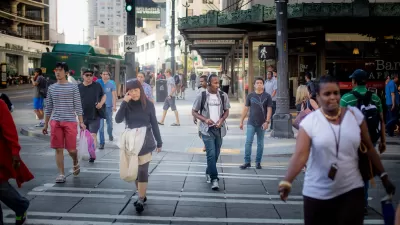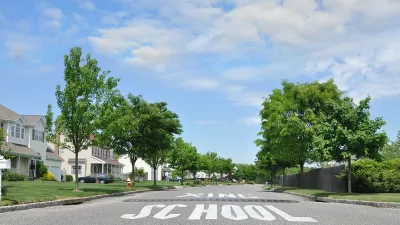A common narrative about Millennials: their preference for urban environments like San Francisco and New York City. To what degree is the stereotype real?

You've probably heard that educated Millennials moved into cities and ruined them for everyone else. Whether or not the last bit of that statement is true, educated Millennials do tend to live in large cities at a higher rate that the balance of the population.
"Nationwide, 25-to-34-year-old college graduates make up 6.4% of the population. In the 100 biggest cities, their (unweighted) average share is 9.3%," according to an article by Justin Fox that crunches data from the American Community Survey to reveal the real urban preferences of educated Millennials.
The article includes a list of the top cities and city-like entities for educated Millennials, calculated as college graduates ages 25-34 as a percentage of total population in 2017, and finds perhaps a few surprises. Leading the group is Arlington, Virginia, followed by Washington, D.C., and then San Francisco. Seattle and Boston round out the top five, though Fox notes that if Manhattan were on the list, it would have come in fifth on the list all by itself.
A list of the same population, on a rolling average between 2013 and 2017 produces even more surprises, listed in order: Hoboken, New Jersey; Somerville, Massachusetts; Cambridge, Massachusetts; Arlington, Virginia; and West Hollywood, California.
The article includes more ways to break down the data, and infographics to illustrate each of the lists.
FULL STORY: Where the Educated Millennials Congregate

Maui's Vacation Rental Debate Turns Ugly
Verbal attacks, misinformation campaigns and fistfights plague a high-stakes debate to convert thousands of vacation rentals into long-term housing.

Planetizen Federal Action Tracker
A weekly monitor of how Trump’s orders and actions are impacting planners and planning in America.

In Urban Planning, AI Prompting Could be the New Design Thinking
Creativity has long been key to great urban design. What if we see AI as our new creative partner?

King County Supportive Housing Program Offers Hope for Unhoused Residents
The county is taking a ‘Housing First’ approach that prioritizes getting people into housing, then offering wraparound supportive services.

Researchers Use AI to Get Clearer Picture of US Housing
Analysts are using artificial intelligence to supercharge their research by allowing them to comb through data faster. Though these AI tools can be error prone, they save time and housing researchers are optimistic about the future.

Making Shared Micromobility More Inclusive
Cities and shared mobility system operators can do more to include people with disabilities in planning and operations, per a new report.
Urban Design for Planners 1: Software Tools
This six-course series explores essential urban design concepts using open source software and equips planners with the tools they need to participate fully in the urban design process.
Planning for Universal Design
Learn the tools for implementing Universal Design in planning regulations.
planning NEXT
Appalachian Highlands Housing Partners
Mpact (founded as Rail~Volution)
City of Camden Redevelopment Agency
City of Astoria
City of Portland
City of Laramie





























